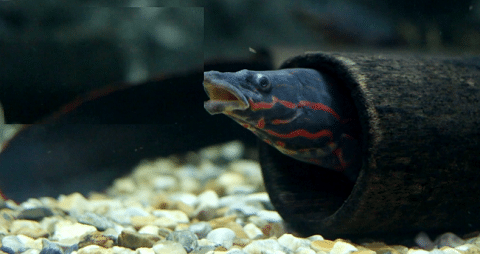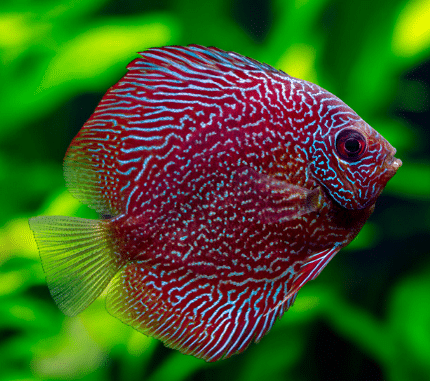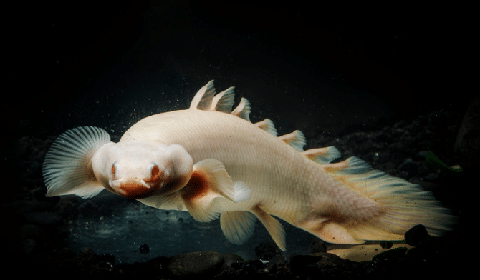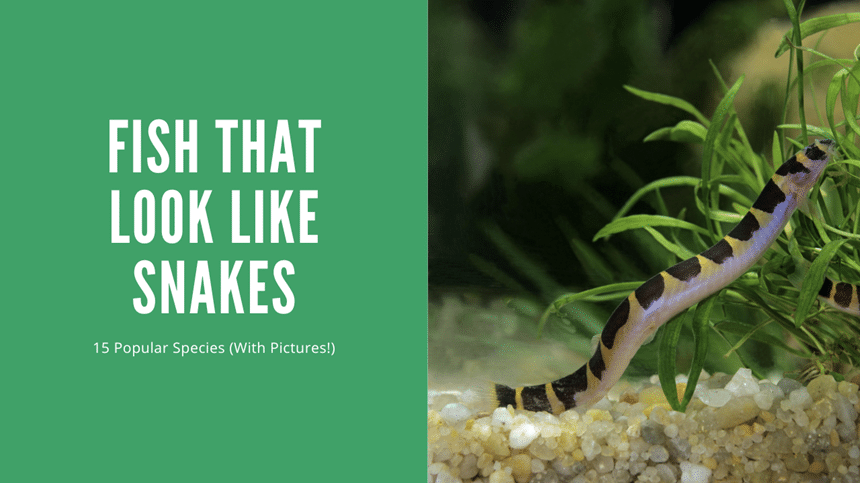Thank you for visiting! By the way… any links on this page that lead to products on Amazon and other stores/partners are affiliate links Aquarium Store Depot earns a commission if you make a purchase.
Are you an aquarium keeper who likes snakes more than fish in your aquarium? Fret not. There are many aquarists who love snakes and other reptiles. However, some prefer to keep fish that look like snakes.
In this article, I will list 15 amazing and popular aquarium fish species that look like snakes. Really!
So, keep reading!
Key Takeaways
- Most snake like fish species are eel shaped fish that are found in both; freshwater habitats and saltwater habitats.
- Most species of snake looking fish including Zebra moray and Snakeheads are medium to large sized fish and are agggressive
- There are smaller peaceful fish like the Kuhli Loach that work in community thank
15 Fish That Look Like Snakes
Here’s a list of 15 amazing fish that look like snakes. Give it a read and decide on an adorable pet for your aquarium now.
1. Kuhli Loach
Kuhli Loaches are hardy bottom-dwelling fish. Nocturnal in nature. Gets along with many fish and tolerate of coldwater environments
- Scientific Name: Pangio kuhlii
- Difficulty Level: Easy
- Temperament: Peaceful and sociable
- Adult Size: 3 to 5 inches
- Minimum Tank Size: At least 20 gallons for 3 to 5 individuals
- Diet: Omnivores
- Origin: Southeast Asia
- Temperature: 75°F to 82°F
The reason why I put Kuhli Loaches in the first place is because their slender body looks exactly like a snake. Despite their body shape, their behavior tends to be like a snake because they are nocturnal, active, and super sneaky creatures.
Kuhli Loaches are beginner friendly fish species that are hardy and easy to keep in a freshwater fish aquarium. Therefore, if you’re new to aquarium hobby, you should definitely pet these amazing creatures.
Make sure to add lots of hiding places and sandy, soft substrate to make them feel at home!
2. Rope Fish
- Scientific Name: Erpetoichthys calabaricus
- Difficulty Level: Intermediate
- Temperament: Peaceful and sociable
- Adult Size: 2 feet
- Minimum Tank Size: 50 gallons
- Diet: Carnivores
- Origin: West & Central Africa
- Temperature: 73° to 82°F
The Rope fish, commonly known as the Reedfish or snake fish, looks like a combo of fish, eel, and snake. Like a snake, the Rope fish can live inside and outside of water because it possesses lungs. Like eels and snails, they have long cylindrical bodies with dorsal finlets that resemble a rope.
They get large reaching around 20 inches with a maximum size of around 36 inches. Therefore, you need a large size tank mainly because of their nocturnal leaping activities.
3. Fire Eel

- Scientific Name: Mastacembelus Erythrotaenia
- Difficulty Level: Difficult
- Temperament: Semi-aggressive
- Adult Size: 20 to 40 inches
- Minimum Tank Size:
- Diet: Omnivores
- Origin: Southeast Asia
- Temperature: 24-28℃
Contrary to its name, the Fire eel is not a true eel. They are one of the most common freshwater fish species with protruding snouts as eels. Mostly, they gain their popularity because of their unique color and big size, reaching around 40 inches in length.
Like a snake, they have those creepy sneaky vibes with no abdominal fins on their long cylindrical bodies with dark brown or gray color.
Though they rarely bite, Fire eels are particularly dangerous because of their spines and toxins. Therefore, proper caution and care are essential, especially with kids.
4. Snakeskin Discus

- Scientific Name: Symphysodon spp.
- Difficulty Level: Difficult
- Temperament: Semi-aggressive
- Adult Size: 6 to 8 inches
- Minimum Tank Size: 50 gallons
- Diet: Omnivores
- Origin: South America
- Temperature: 82-88°F
A gift of selective breeding, the Snakeskin discus looks nothing like a snake. However, their spotted appearance with thin striations and intricate scale patterns resembles the skin of snakes. Hence, the name.
With a beautiful and eye catching appearance and a peaceful nature, the coloration varies with Snakeskin Discus—red, brown, and blue, which all are phenomenal looking. Therefore, Snakeskin Discus makes a fitting choice for many aquarium enthusiasts.
However, they have special requirements to meet for their happy and healthy survival. Thus, maintaining the water quality and temperature is essential. Check out my discus guide for more tips on how to properly keep them.
5. Tire Track Eel
- Scientific Name: Mastacembelus Favus
- Difficulty Level: Intermediate
- Temperament: Semi-aggressive
- Adult Size: 28 inches
- Minimum Tank Size: 80 gallons
- Diet: Carnivores
- Origin: Riverine fauna of India, Bangladesh, Pakistan, and Sri Lanka.
- Temperature: 72-82°F
Long cylindrical bodies, irregular dark brown patterns, and zig zag markings with snout-like faces with no pelvic fins make the Tire Track Eel a fitting match for a snake.
Also known as the ZigZag Eel or Reticulated Spiny Eel, they are a popular freshwater aquarium fish with shy and timid personalities. Mostly active during the night time, the Tire Track Eels are usually found burrowing in the substrate and other decors.
Therefore, choosing a sandy and soft substrate with lots of tank decors, such as large pieces of driftwood, smooth rock caves, PVC pipes, and plant thickets, are essential to keep them happy and healthy.
6. Snakeskin Barb
- Scientific Name: Puntius rhomboocellatus
- Difficulty Level: Intermediate
- Temperament: Semi-aggressive
- Adult Size: 2 inches
- Minimum Tank Size: 60-gallon tank
- Diet: Omnivores
- Origin: Borneo, Indonesia
- Temperature: 73 to 82 degrees Fahrenheit
At first glance, you will not relate Snakeskin barb to snakes. However, upon careful observation, you’ll notice that Snakeskin Barbs have Python like markings all over their bodies that earn the name.
The Snakeskin barbs are barb fish that are relatively small fish and thrive in a group of 6 to 8 fish species.
They are an ideal choice for experienced aquarists who appreciate some mid and upper level activities in their freshwater fish aquarium.
7. Northern Snakehead fish
- Scientific Name: Channa Argus
- Difficulty Level: Difficult
- Temperament: Aggressive, predatory
- Adult Size: 40″ long
- Minimum Tank Size: 500 gallons
- Diet: Carnivores
- Origin: China, Southern Siberia, and North Korea
- Temperature: 41 to 60° F
Northern snakehead fish is named after the snake like head shape that hunts in packs. Northern snake eels are one of the largest freshwater habitats that are usually found in cool waters and can endure massive temperature changes ranging from 32° to 85°F, which is insane1.
However, they are legally banned in the United States, Europe, and Australia, so you need a special permit to own one in your home aquarium.
8. Senegalus Eel

- Scientific Name: Polypterus senegalus
- Difficulty Level: Intermediate
- Temperament: Semi-aggressive
- Adult Size: 20 inches
- Minimum Tank Size: 90 gallons
- Diet: Carnivore
- Origin: Egypt, Kenya, Nigeria, and Senegal
- Temperature: 75-82° F
If you’re someone who’s obsessed with snakes and dinosaurs, you should definitely check out the Senegalus Eel, also commonly known as the Dinosaur Bichir.
Dinosaur Bichirs are large sized fish that require a tank size of a minimum 90 gallons. However, if your Senegalus Eel is a juvenile, you can keep it in a 40 gallon tank and upgrade later. However, make sure to provide them with optimal water conditions and a varied diet that compliments their active nature.
9. Cobra Guppy

- Scientific Name: Poecilia reticulata
- Difficulty Level: Easy
- Temperament: Peaceful and easy going
- Adult Size: 2 to 3 inches
- Minimum Tank Size: 10 gallons
- Diet: Omnivores
- Origin: Northeast South America
- Temperature: 70°F to 81°F
When it comes to exotic freshwater fish, cobra guppies are one of the fanciest and most beautiful exotic fish you’ll ever find. The coloration varies from Red to yellow, blue, white, black, Albino and blue, and Gold—Each one is beautiful in its own unique way.
These guppy fish get their name because of their distinctive body markings that resemble the hood of a cobra. Since they are hardy fish that are also active swimmers, they are excellent for beginner aquarists as long as you provide them with a well maintained aquarium with a good oxygen supply and water quality.
10. Pipefish

- Scientific Name: Syngnathinae
- Difficulty Level: Difficult
- Temperament: Depends on species
- Adult Size: 8 inches
- Minimum Tank Size: 30 Gallons
- Diet: Carnivore
- Origin: Atlantic and Pacific Oceans
- Temperature: 72.0 to 77.0° F
- Reef Safe: Depends on species
- Available As Tank Bred: Yes
Pipefish look more like seahorses than snakes with an extraordinary ability to camouflage in the background of their environment.
The long snouts and bony rings around their bodies make them unique looking fish that change color to blend in with their surroundings.
Though, smaller in size than other average marine creatures, Pipe fishes are difficult to keep and require an experienced aquarist’s skills for a better life. Therefore, if you’re a beginner, Pipe fish are not recommended.
11. Moray Eel

- Scientific Name: Gymnothorax kidako
- Difficulty Level: Intermediate
- Temperament: Large, aggressive, predatory
- Adult Size: 39.4 inches
- Minimum Tank Size: 160 Gallons
- Diet: Carnivore
- Origin: Western Central Pacific
- Temperature: 66.0 to 78.0° F
- Reef Safe: With caution (Requires specialized filtration and lighting equipment)
- Available As Tank Bred: Yes
Many people believe that eels are just sea snakes with gills. However, true aquarists know that eels are basically snake shaped fish that are a rare beauty in the aquarium hobby, just like the Moray eel.
Frankly speaking—the Moray eel just looks like a cross between a snake and an eel with no pectoral fins or pelvic fins. Also, there are small holes in the elongated gill openings but they don’t possess any bony plate covers like most fish. They possess a continuous dorsal fin and anal fin but no scales.
However, if you’re willing to keep a Moray eel, make sure to provide plenty of space. They get large and are aggressive. They are a better fit for experienced hobbyists.
12. Bichir
- Scientific Name: Polypterus bichir
- Difficulty Level: Intermediate
- Temperament: Semi-aggressive
- Adult Size: 1 to 2.5 feet
- Minimum Tank Size: 90 gallons
- Diet: Carnivores
- Origin: Northeast Africa
- Temperature: 74°F to 82°F
Bichirs are one of the most fantastic fish that are ancient and add a very sophisticated appeal to your tank.
In fact, it is one of my favorite larger sized fish that looks like a snake.
Granted, they come from shallow water, their eyesight is terrible and they have to rely on other senses to navigate properly and find food.
One of the most interesting features of Bichirs is the presence of lungs that allow them to come to the water’s surface to get oxygen. While easy to keep, Bichirs are very hard to breed.
13. Banded Snake Eel (Ophichthidae)
- Scientific Name: Myrichthys colubrinus
- Difficulty Level: Easy
- Temperament: Somewhat aggressive
- Adult Size: 4 feet
- Minimum Tank Size: 150+ gallons tank
- Diet: Small fishes, crabs and shrimps
- Origin: Indo-Pacific
- Temperature: 82 °F
- Reef Safe: Yes
- Available As Tank Bred: Yes
Snake eels stay true to their name by the way they burrow very fast with the tips of their tails just like a snake. As nocturnal as they are, they remain hidden during the day in the soft substrate and come out at night to hunt.
Maintenance wise, they are easy to keep and feed. Just provide them with optimal normal saltwater fish parameters including pH, saliny, temperature, and water movement, and they are good to go!
14. Snakeskin Gourami

- Scientific Name: Trichopodus pectoralis
- Difficulty Level: Easy
- Temperament: Peaceful
- Adult Size: 9.8 inches
- Minimum Tank Size: 35 Gallons
- Diet: Omnivore
- Origin: Asia
- Temperature: 72.0 to 86.0° F
The Snakeskin Gourami might not be the most common freshwater fish as other fish in the Gourami family, but the scales and patterns on their bodies bear a striking resemblance to that of a snake.
In their native land, they are sought after as a good food fish and cultivated for purpose. However, in the aquarium hobby, they are one of the more peaceful gourami fish that are hardy and easy to breed. Hence, perfect for beginner aquarists.
15. Orangethroat Pikeblenny
- Scientific Name: Chaenopsis alepidota
- Difficulty Level: Easy
- Temperament: Peaceful
- Adult Size: 6 inches
- Minimum Tank Size: 20+ gallons tank
- Diet: Small fish, crustaceans
- Origin: Eastern Pacific Ocean
- Temperature: 82.4 °F
- Reef Safe: Yes
- Available As Tank Bred: Yes
The Orangethorat Pikeblenny is one of the hardiest saltwater fish that looks like and is found in coastal shallows.
In the aquarium hobby, they are hardy fish species that should be kept with other peaceful tank mates with lots and lots of hiding places.
However, make sure to house only one Pikeblenny in an aquarium. They will fight amongst members of their own species.
Fun Fact: An Orangethroat PikeBlenny (Chaenopsis alepidota), displays its colors to attract a mate.
FAQS
What kind of fish looks like a snake?
Some freshwater and saltwater fish that look like a snake are Moray eels, Orangethorat Pikeblenny, Snake eels, Northern pike, Dragon goby, Zebra moray, and Bichirs with elongated body.
What is a long, thin fish that looks like a snake?
Most eel shaped fish have long, laterally compressed body that looks like a snake.
What is a saltwater snake like fish?
Ophichthidae or Banded snake eels are saltwater snake like fish. Moray eels are another example and are readily available at specialized fish stores.
What is the black fish that looks like a snake?
Snakehead fish are black head fish that look like a snake.
Final Thoughts
Snakes are sneaky little creatures that are curious and confident. No wonder why many people insist on keeping snakes as pets.
If you’re a seasoned aquarist who loves snakes but cannot keep them as pets, you can definitely go for any snake like fish from the list above and have fun with them!
- About the Author
- Latest Posts
I’m thrilled that you found Aquarium Store Depot! Here you’ll find information on fish, aquariums, and all things aquatics related. I’m a hobbyist (being doing this since I was 11) and here to help other hobbyists thrive with their aquariums! I adhere to a high quality Editorial Process and Review products with real life field usage and practical analysis.






